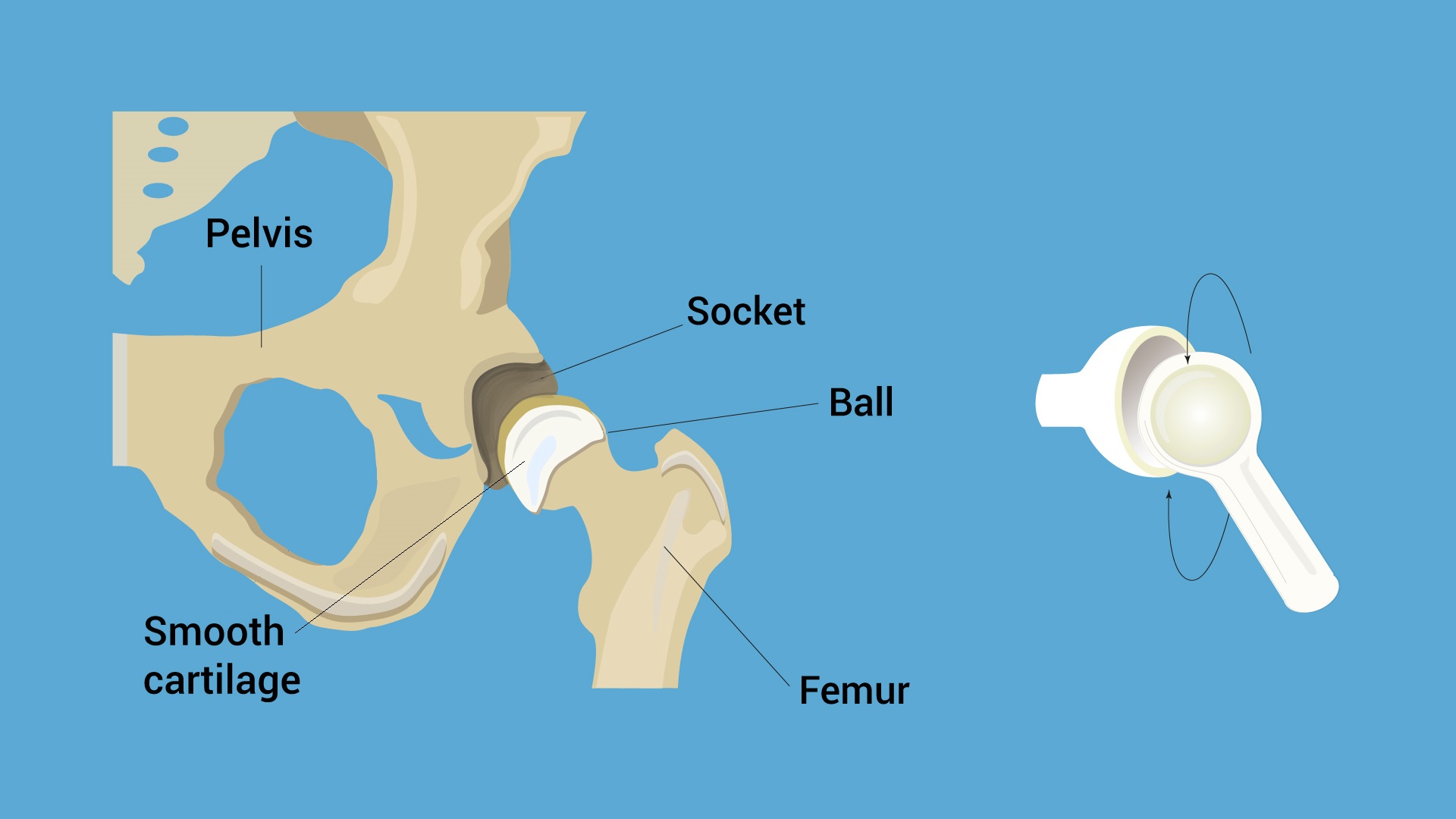6th Grade > Biology
BODY MOVEMENTS MCQs
Total Questions : 100
| Page 1 of 10 pages
:
Definition: 1 Mark
Types: 1 Mark each
Freely movable jointsare the joints which solely help in the movement of the structure or organ in which they are present. Four freelymovablejoints present in our body are Ball and socket joint, Pivot joint, hinge joint and gliding joint.
Ball and socket joint:This joint is formed by two bones in which one end of a bone is rounded and ball-like. It fits into a cup-like depression of the other bone. This joint provides movement in any direction. Examples of a ball and socket joint are shoulder joints and hip joints.
Pivot joint:This is the joint in which one bone fits into a ring formed by the other bone. It rotates over the pivot-like end of the other bone. An example is the joint between the neck and the head
Hinge joint:This is a joint which moves like a hinge in a single plane, not more than 180 degrees.It provides back and forth movement of the structure. This can be compared the hinge in a door. Examples of a hinge joint are the elbow joint and the knee joint.
Gliding joints:This is a joint which allows bones to glide over each other. These types of joints provide little movement in all directions. These are the joints present at the ankles, wrist and between the vertebrae.
:
Functions: 1 Mark each.
Any three:
- It protects the spinal cord.
- It serves as an attachment for the ribs.
- It provides support and place of attachment for the pectoral and pelvic girdle.
- It provides movement for the human skeleton.
- It helps in walking and standing erect and maintaining correct posture.
:
Bone: 1 Mark
Cartilage: 1 Mark
Bone: Bone is a hard and non- flexible structure. It forms the skeleton
Cartilage : Cartilage is soft and flexible structure. It provides flexibility to the joints. It is found in the nose, ears and the rings of the trachea to give flexibility.
Answer: Option C. -> backbone
:
C
∙ The bony structure that you can feel on touching the centre of your back is called the backbone. It is made up of 33 smaller bones called vertebrae.
∙ Rib cage is the bony structure that protects the chest cavity.
∙ Pelvic bones are present in the pelvic region below the abdomen.
∙ Human shoulder is made up of three shoulder bones.
:
C
∙ The bony structure that you can feel on touching the centre of your back is called the backbone. It is made up of 33 smaller bones called vertebrae.
∙ Rib cage is the bony structure that protects the chest cavity.
∙ Pelvic bones are present in the pelvic region below the abdomen.
∙ Human shoulder is made up of three shoulder bones.
Answer: Option B. -> Swimming
:
B
Fishes are found in water. So, they exhibit swimming movement. Slithering/concertinamovement is exhibited bysnakes and crawling movements are seen in crabs.
:
B
Fishes are found in water. So, they exhibit swimming movement. Slithering/concertinamovement is exhibited bysnakes and crawling movements are seen in crabs.
Answer: Option B. -> Slither
:
B
Snakes do not have limbs. They move by dragging their body throughout in the form of loops. Hence, snakes have a crawling or slithering type of movement.
:
B
Snakes do not have limbs. They move by dragging their body throughout in the form of loops. Hence, snakes have a crawling or slithering type of movement.
Answer: Option C. -> ball and socket joint
:
C
In a ball and socket joint,a bone ending with a ball-like structure fits into the socket of an adjacent bone. The bone with a ball-like structure has the capability tomove nearly in all directions. These joints are present in hip joint and shoulder joints.

:
C
In a ball and socket joint,a bone ending with a ball-like structure fits into the socket of an adjacent bone. The bone with a ball-like structure has the capability tomove nearly in all directions. These joints are present in hip joint and shoulder joints.

Answer: Option C. -> movement
:
C
Movement in living beings is described as the change of place or position. It takes place by the entire body or one or more of its parts. Movement is essential for various purposes like gathering food, escaping from a predator or moving to places with better environmental conditions. Movement in animals is essential for their survival.
:
C
Movement in living beings is described as the change of place or position. It takes place by the entire body or one or more of its parts. Movement is essential for various purposes like gathering food, escaping from a predator or moving to places with better environmental conditions. Movement in animals is essential for their survival.
Answer: Option C. -> Earthworm
:
C
Earthworms do not have any bones. It has muscles to extend and shorten its body. These muscles help the earthworm in movement.
:
C
Earthworms do not have any bones. It has muscles to extend and shorten its body. These muscles help the earthworm in movement.
Answer: Option C. -> Both the statements are correct.
:
C
The skeletal system performs the following functions:
1. It gives shape and structure to our body.
2. It helps our body in performing different body movements.
3. It protects our delicate internal organs.
:
C
The skeletal system performs the following functions:
1. It gives shape and structure to our body.
2. It helps our body in performing different body movements.
3. It protects our delicate internal organs.
















